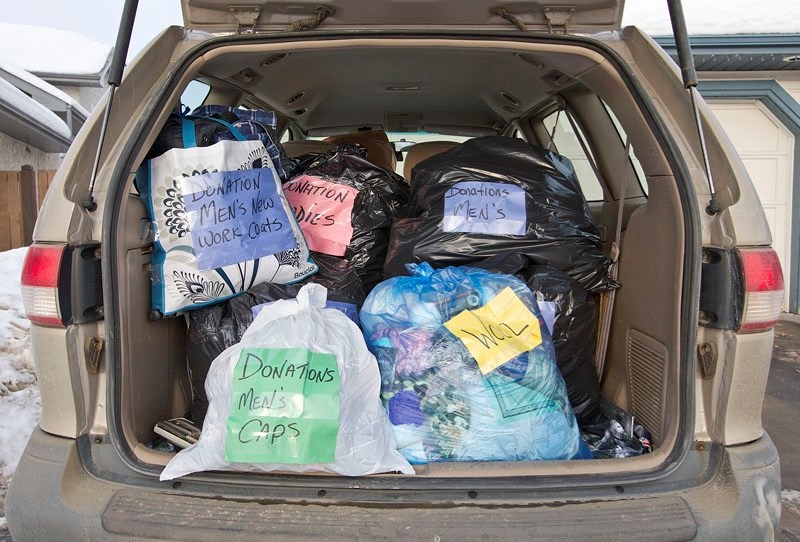My dining table isn’t for dining at the moment. Right now, it’s a catch-all for leftover Christmas wrap, my kids’ school field trip forms, a few candles and a pair of forlorn mittens. Pretty soon, the pile will become a small mountain, as unread mail, flyers and that dying poinsettia plant add to the growing collection of clutter.
Clutter can quickly get out of control and become overwhelming – where to start? The hall closet, with its melange of runners, boots and winter wear? Or the kitchen cupboards, crammed with December’s leftover icing sugar and cookie sprinkles? It’s stressful when you can’t find things you need, and when the unsorted piles of laundry take over your seat on the couch – stressful, common and, thankfully, quite solvable.
“Services like ours didn’t exist 50 years ago. We’re way bigger consumers than our forefathers, with more disposable income and access to cheap, disposable goods. And people have a mind set of “out with the old, in with the new,” said John Netherway, chief operating officer for justjunk.com.
Hanging onto stuff can reach the extreme with hoarding, a serious issue that often requires professional help. For most people though, de-cluttering is manageable and there are self-help solutions and experts ready to tackle the task with us.
If you want to get organized, totes and storage bins of all hues and varieties await at the local big box store. Plastic tubs fly off the shelves at the local Home Depot every January, more than any other month of the year, says supervisor Dwaine Pelletier. There are stackable totes with lids, underbed rollaway models, and utility shelving (some that can hold up to 2,000 pounds – perfect for garage tool storage). There’s even shallow shelving that can snug up behind a bedroom door and shoe box-type totes – all helpful for sorting, labelling and organizing stuff of any dimension.
Experts agree that we should make an appointment with ourselves for a de-cluttering project: time allotted on the calendar to sort our stuff into piles for keep, donate and pitch. Local charitable shops welcome decent-quality clothing, kitchenware and knick knacks – places like the Lo-Se-Ca Foundation and the Salvation Army Thrift Store. And when you need, companies abound to take junk off your hands. At justjunk.com, for example, workers will do curbside pickup for do-it-yourselfers, or they can come in and do the job for you – removing and disposing of old appliances, renovation debris, hot tubs, furniture – you name it, they’ll haul it away.
“No one is perfect. It affects every age, from young families tripping over kids’ toys and baskets of laundry, to seniors who’ve lived in the same house for decades. It can get depressing, and become too much for people – they push the problem away and keep shopping,” said St. Albert organizing expert Anita Beil, whose company The Clutter Helper helps clients reclaim a closet, pantry, or an entire home from the stress of clutter.
“When you’re no longer able to function well in your home, it’s time to act,” she said.
Using the mantra, “everything in the home has to have a home,” Beil sorts, cleans, donates and even sells stuff online for her clients. She also offers numerous helpful hints in the quest for a clutter-free life on her website, theclutterhelper.com.
To handle the paper explosion we all face (flyers, bills, etc.) Beil advises to keep a bin by the front door, and get rid of flyers and mail as quickly as it’s seen. Shred personal papers, keep utility bills for only a year and tax returns for seven years. And go paperless with bills etc. whenever possible.
“Today, everything you need is only a Google away,” Beil adds. “Only keep what is beautiful, useful or loved. Once you realize that stuff is just stuff – not memories and relationships – it becomes easier to discard or donate unwanted items.”




